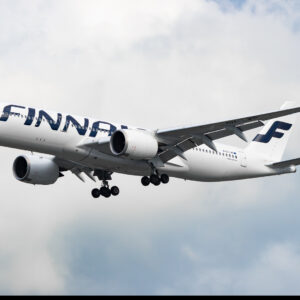Traveling to different countries has a lot of tricky things that normal travellers might not notice. One of these tricky things is about whether cabin crew members need a visa or not. This might seem like an easy question, but it actually starts a maze of rules and needs that are different in each country. This article is here to help you understand this complicated topic. It will give you a good idea about what kind of visas cabin crew members usually need.
Understanding the Basics
At the heart of international travel lies the General Declaration (GD), a document that most countries require airlines to provide for international flights. This paper is like a complete history of the flight. It has all the details, like the names of the pilots and cabin crew, as well as when they arrived and left. In many instances, the provision of a standard GD is sufficient, and crew members are not required to apply for a visa. Nonetheless, this isn’t a global standard and differs depending on the specific country.
The Intricacies of the C-1/D Visa
One of the most common types of visas issued to flight attendants and captains is the C-1/D visa.This particular visa is tailored to permit crew members or staff of overseas airlines to undertake short-term travel to the United States for their work responsibilities. The C-1/D visa is not just a document; it’s a testament to the international nature of the aviation industry and the need for regulations that accommodate this.
To qualify for a C-1/D visa, the applicant must demonstrate that they are a regular part of the crew and that they plan to leave the country within a maximum of 29 days. This stipulation is a reflection of the transient nature of the work that cabin crew members undertake.
Visa Restrictions and Requirements
Our planet is a diverse tapestry of countries, each with its unique compilation of laws and guidelines. This diversity extends to the realm of visa requirements for flight crew members. While some countries are content to allow flight crew members to enter without a visa, others insist on specific “crew” visas.
For instance, China is particularly stringent about crew members having “C”-type visas. Failure to possess a crew visa can result in severe penalties such as fines or deportation. This underscores the importance of crew members familiarising themselves with the visa requirements for each country they plan to visit.
The Challenges for Private Jet Crew
The world of private jets is often seen as glamorous and exclusive. However, for the crew members working on these flights, the reality can be quite different, especially when it comes to obtaining visas. Unlike their counterparts in commercial airlines, private jet crews are not usually entitled to the GD service and must apply for visas themselves.
This requirement can create additional hurdles, but the experience often more than compensates for it. It’s a testament to the dedication and resilience of these professionals who navigate these challenges to ensure their passengers enjoy a seamless travel experience.
Conclusion
To wrap things up, figuring out if cabin crew needs a visa isn’t easy. It’s complicated because it depends on things like where the crew member is from, which airline they work for, and how long they want to stay.
It’s really important for crew members to understand these complicated things so they can have a trip without problems. This also shows how traveling between countries is really complicated and has lots of rules. In a time when the whole world is becoming more connected, it’s very important for these rules to keep changing and improving to match how the aviation industry is always changing too.
Frequently Asked Questions (FAQ)
What is the visa for flight attendants?
The visa commonly used by flight attendants is the C-1/D visa. It is specifically designed for crew members or employees of foreign airlines to travel to the United States temporarily for their duties. The C-1/D visa allows flight attendants to enter and perform their roles on international flights.
Can a foreigner become a flight attendant?
Yes, foreigners can become flight attendants. Airlines often have diverse and multinational cabin crews consisting of individuals from various countries. However, the specific requirements may vary depending on the airline and country of employment. Prospective flight attendants typically need to meet certain qualifications, such as language proficiency, customer service skills, and physical fitness, in addition to obtaining the necessary work permits or visas.
Why do cabin crew need a US visa?
Cabin crew members may require a US visa if they are operating flights that include layovers or stopovers in the United States. The US visa allows them to enter the country and perform their duties during these layovers. The C-1/D visa is commonly used by cabin crew for this purpose, as it covers transit and crew-related activities.
What is a B1 B2 visa for crew members?
The B1/B2 visa for crew members is a combined visa category that allows crew members to enter the United States for business (B1) and tourism (B2) purposes. It is applicable to crew members who are not employed by a US-based airline but need to visit the United States for short-term business-related activities or personal tourism during their layovers or off-duty periods.







